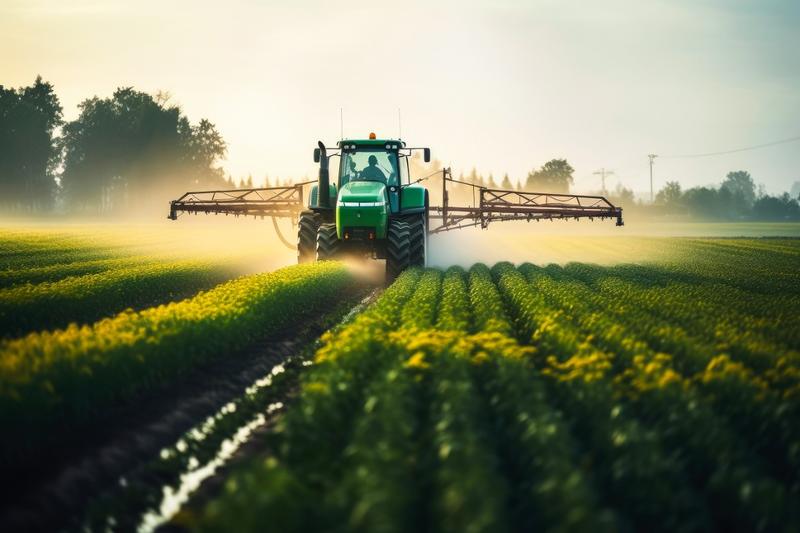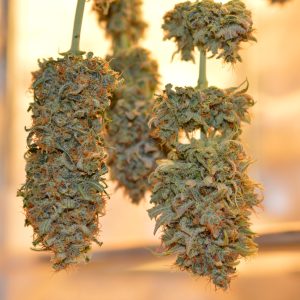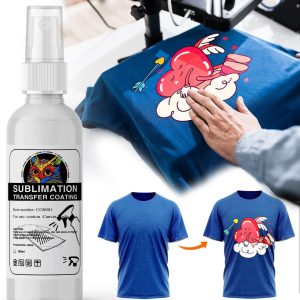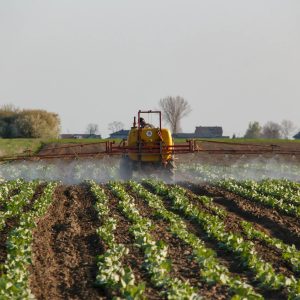
Modern agriculture relies heavily on precision application of crop protection products, making sprayer farm equipment an essential component of successful farming operations. Whether you’re managing a small family farm or operating large-scale commercial agriculture, understanding the intricacies of farm spraying systems can significantly impact your crop yields, operational costs, and environmental stewardship. This comprehensive guide explores everything you need to know about sprayer farm technology, from basic equipment selection to advanced precision agriculture techniques.
Understanding Sprayer Farm Equipment Fundamentals
Sprayer farm systems represent sophisticated agricultural machinery designed to deliver liquid solutions uniformly across crop fields. These systems have evolved from simple hand-held devices to complex, GPS-guided machines capable of variable-rate application and real-time monitoring. The primary function of any farm sprayer involves three critical components: the tank system for holding solutions, the pump mechanism for creating pressure, and the boom assembly with nozzles for precise application.
The effectiveness of your sprayer farm operation depends on understanding how these components work together to achieve optimal coverage while minimizing waste and environmental impact. Modern farm sprayers incorporate advanced hydraulic systems that maintain consistent pressure across varying field conditions, ensuring uniform application rates regardless of terrain variations or operational speed changes. This technological integration has revolutionized how farmers approach crop protection, enabling more precise application timing and reducing overall chemical usage while maintaining or improving pest and disease control effectiveness.
Types of Farm Sprayer Systems
Self-Propelled Sprayers represent the pinnacle of sprayer farm technology, offering the highest capacity and most advanced features available in agricultural spraying equipment. These machines typically feature tank capacities ranging from 800 to 1,200 gallons, with boom widths extending up to 120 feet or more. Self-propelled sprayers provide superior maneuverability in challenging field conditions and offer advanced features like individual nozzle control, variable-rate application mapping, and integrated weather monitoring systems. The investment in self-propelled sprayer farm equipment typically ranges from $300,000 to $600,000, making them suitable for large-scale operations with sufficient acreage to justify the expense.
Pull-Behind Sprayers offer a more economical entry point into professional sprayer farm operations while still providing substantial capacity and functionality. These systems attach to existing tractors, utilizing the tractor’s power take-off (PTO) system to operate pumps and hydraulic functions. Tank capacities typically range from 200 to 800 gallons, with boom widths from 40 to 90 feet. Pull-behind sprayers provide excellent value for mid-size farming operations, combining affordability with professional-grade application capabilities. The modular nature of these systems also allows for easier maintenance and component replacement compared to integrated self-propelled units.
Three-Point Mounted Sprayers serve smaller farming operations or specialized applications where maneuverability and compactness are priorities. These systems mount directly to the tractor’s three-point hitch system, offering tank capacities from 50 to 300 gallons with boom widths ranging from 20 to 60 feet. While smaller in capacity, modern three-point sprayers incorporate many advanced features found in larger systems, including GPS guidance, boom height control, and precision nozzle management. This category provides an excellent starting point for farmers transitioning from basic application methods to professional sprayer farm systems.
Essential Components of Modern Sprayer Farm Systems
Tank and Mixing Systems
The heart of any sprayer farm operation lies in its tank and mixing system, which must handle a wide variety of chemical formulations while maintaining product integrity and ensuring operator safety. Modern sprayer tanks incorporate advanced materials like polyethylene or fiberglass that resist chemical corrosion while providing excellent visibility for monitoring solution levels. Tank capacities have increased significantly over the past decade, with many systems now featuring dual-tank configurations that allow for simultaneous application of multiple products or separate storage of water and concentrated chemicals.
Mixing systems have evolved to include hydraulic agitation, mechanical stirring, and venturi mixing technologies that ensure uniform solution preparation regardless of chemical compatibility challenges. Advanced sprayer farm systems feature automated mixing capabilities that precisely measure and blend multiple products according to pre-programmed recipes, reducing operator exposure to chemicals while improving application consistency. These systems often include bypass agitation that maintains solution uniformity during application, preventing separation or settling that could lead to uneven product distribution across the field.
Pump Technology and Pressure Management
Centrifugal pumps dominate modern sprayer farm applications due to their ability to handle abrasive materials and provide consistent flow rates across varying pressure demands. These pumps feature impeller designs optimized for agricultural chemicals, with materials selected to resist corrosion from commonly used herbicides, insecticides, and fungicides. Flow rates typically range from 40 to 100 gallons per minute, depending on boom width and application requirements. The self-priming capabilities of modern centrifugal pumps eliminate many operational challenges associated with system startup and maintenance.
Diaphragm pumps offer advantages in specific sprayer farm applications, particularly where precise flow control or handling of sensitive formulations is required. These positive displacement pumps provide excellent pressure stability and can handle higher concentrations of suspended solids without performance degradation. Many operators prefer diaphragm pumps for specialty applications involving thick formulations or when precise pressure control is critical for specific nozzle types. The pulsation dampeners commonly integrated with diaphragm pump systems help maintain steady pressure delivery to boom sections.
Boom Design and Control Systems
Modern sprayer farm boom systems represent engineering marvels that must balance structural strength, aerodynamic stability, and precise chemical delivery across widths that can exceed 120 feet. Advanced boom designs incorporate multiple breakaway sections that protect against damage from field obstacles while maintaining structural integrity during normal operations. Height control systems use ultrasonic sensors to maintain consistent boom positioning above the crop canopy, ensuring optimal spray pattern overlap and preventing drift or uneven coverage.
Individual nozzle control has revolutionized sprayer farm operations by enabling variable-rate application and section control based on GPS mapping and prescription files. These systems can turn individual nozzles on or off in real-time, preventing over-application in previously treated areas or adjusting rates based on soil conditions, pest pressure, or crop development stages. The integration of flow sensors at each nozzle position provides immediate feedback on system performance, alerting operators to plugged nozzles, pressure variations, or other issues that could compromise application quality.
Precision Agriculture Integration in Sprayer Farm Operations
GPS Guidance and Mapping Technology
GPS guidance systems have transformed sprayer farm operations from approximate application methods to precision agriculture practices capable of centimeter-level accuracy. Modern systems integrate Real-Time Kinematic (RTK) GPS correction signals that enable consistent pass-to-pass accuracy, eliminating overlaps and skips that waste chemicals and create uneven crop protection. This technology has proven particularly valuable in large-field operations where traditional foam markers or manual guidance methods become impractical or inaccurate.
The integration of prescription mapping with GPS guidance allows sprayer farm operators to implement variable-rate applications based on soil conditions, historical yield data, pest scouting results, or crop health imaging. These systems can automatically adjust application rates across the field according to pre-loaded prescription files, optimizing input usage while addressing field variability. The data logging capabilities of modern GPS systems provide detailed records of application timing, rates, and conditions, supporting regulatory compliance and enabling continuous improvement in application strategies.
Variable Rate Technology (VRT)
Variable Rate Technology represents the cutting edge of sprayer farm precision, enabling operators to adjust application rates in real-time based on multiple data sources and field conditions. VRT systems integrate soil mapping data, crop health imagery, weather information, and historical performance records to create detailed application prescriptions that optimize input usage while maximizing crop protection effectiveness. This technology has demonstrated significant potential for reducing overall chemical usage while maintaining or improving pest and disease control outcomes.
The economic benefits of VRT integration in sprayer farm operations extend beyond simple input cost savings. By optimizing application rates based on actual field needs, farmers can reduce environmental impact, minimize resistance development in pest populations, and improve overall crop health through more targeted interventions. The data generated by VRT systems also provides valuable insights for future season planning, enabling continuous refinement of application strategies based on measured results and changing field conditions.
Nozzle Selection and Spray Quality Optimization
Understanding Spray Droplet Physics
Droplet size distribution fundamentals are crucial for effective sprayer farm operations, as they directly impact coverage quality, drift potential, and biological efficacy of applied materials. Fine droplets (150-250 microns) provide excellent coverage for contact herbicides and insecticides but increase drift risk and evaporation losses. Medium droplets (250-350 microns) offer a balance between coverage and drift reduction suitable for most systemic herbicides and many fungicide applications. Coarse droplets (350-500 microns) minimize drift risk and are preferred for soil-applied herbicides or situations where drift-sensitive crops are nearby.
The relationship between droplet size and biological efficacy varies significantly among different chemical classes and target pests. Contact herbicides require fine to medium droplets for adequate leaf coverage, while systemic herbicides can achieve effective control with coarser droplets that reduce drift risk. Insecticide applications often require fine droplets for thorough coverage of insect hiding places, but fungicide applications may perform adequately with medium to coarse droplets depending on the specific active ingredient and disease pressure. Understanding these relationships enables sprayer farm operators to optimize nozzle selection for each specific application scenario.
Nozzle Technology and Selection Criteria
Flat fan nozzles remain the standard for most sprayer farm applications due to their uniform spray pattern, consistent droplet size distribution, and reliable performance across varying pressure ranges. Modern flat fan designs incorporate pre-orifice technology that improves pattern uniformity and reduces sensitivity to pressure fluctuations. Extended range flat fan nozzles provide consistent performance across wider pressure ranges, enabling operators to adjust application rates by modifying pressure without changing nozzles, improving operational flexibility and reducing downtime.
Air induction nozzles have gained popularity in sprayer farm operations due to their ability to produce consistent, coarse droplets that significantly reduce drift potential while maintaining adequate coverage for many applications. These nozzles incorporate venturi air injection technology that creates larger droplets with internal air bubbles, resulting in improved impaction characteristics and reduced bounce-off from waxy leaf surfaces. The drift reduction benefits of air induction nozzles make them particularly valuable for applications near sensitive areas or when weather conditions present elevated drift risks.
Specialty nozzles serve specific applications within comprehensive sprayer farm systems, including twin-fan nozzles for improved coverage in dense canopies, asymmetric patterns for directed applications, and adjustable-rate nozzles that enable precise flow control without pressure changes. Pulse-width modulation (PWM) nozzle systems represent the latest advancement in spray technology, using rapid on-off cycling to control flow rates while maintaining consistent pressure and droplet size characteristics. This technology enables true variable-rate application without the compromises associated with pressure-based rate changes.
Water Quality and Chemical Compatibility Management
Water Source Evaluation and Treatment
Water quality assessment forms a critical foundation for successful sprayer farm operations, as poor water quality can significantly impact chemical efficacy, cause tank mixing problems, and lead to equipment damage. Hard water conditions, characterized by high calcium and magnesium concentrations, can bind with certain herbicides and reduce their biological activity. Iron contamination can catalyze chemical degradation reactions, while high pH levels can accelerate hydrolysis of susceptible active ingredients. Regular water testing should evaluate pH, hardness, iron content, and other parameters that affect chemical performance.
Water conditioning strategies for sprayer farm operations include pH adjustment using buffering agents, water softening to reduce hardness impacts, and sequestrant addition to manage metal ion interference. Acidifying agents help optimize herbicide activity in high pH water, while compatibility agents improve mixing characteristics of difficult formulations. The economics of water treatment must be balanced against the cost of reduced efficacy or tank mixing problems, with many operations finding that modest treatment investments provide significant returns through improved chemical performance and reduced application failures.
Tank Mixing Protocols and Compatibility Testing
Proper mixing sequences are essential for preventing compatibility problems that can result in tank sediment, foam formation, or chemical precipitation in sprayer farm systems. The standard mixing sequence begins with water, followed by water-soluble packets, then liquid formulations in order of increasing viscosity, and finally adjuvants and compatibility agents. Maintaining proper agitation throughout the mixing process prevents ingredient separation and ensures uniform solution characteristics. Many operators maintain detailed mixing logs that document successful combinations and identify problematic formulations for future reference.
Compatibility testing should be performed before mixing large quantities of unfamiliar chemical combinations, particularly when using generic formulations or tank-mixing multiple active ingredients. Small-scale jar tests can identify potential precipitation, phase separation, or other compatibility issues before they affect field operations. The testing process involves mixing small quantities of each component in the same proportions and sequence planned for field application, then observing the mixture for physical or chemical changes over a period representing typical tank residence time.
Calibration Procedures and Application Rate Management
Systematic Calibration Methodology
Accurate calibration forms the cornerstone of effective sprayer farm operations, ensuring that intended application rates are achieved consistently across varying field conditions and operational parameters. The calibration process begins with precise measurement of sprayer speed across representative field conditions, accounting for variations in terrain, soil conditions, and crop canopy that affect actual ground speed. GPS-based speed monitoring provides more accurate readings than traditional mechanical speedometers, particularly in challenging field conditions where wheel slippage or rough terrain affects mechanical measurements.
Flow rate verification requires systematic testing of individual nozzles and boom sections to identify variations that could result in uneven application patterns. Digital flow meters provide real-time monitoring of system performance, while manual collection and measurement of individual nozzle outputs ensures that calculated application rates match actual delivery rates. The calibration process should account for pressure variations across the boom width, particularly in systems with long boom assemblies where friction losses can create significant pressure differentials between boom sections.
Dynamic Calibration and Rate Adjustment
Real-time calibration monitoring enables sprayer farm operators to maintain accurate application rates despite changing field conditions or operational parameters. Modern control systems continuously monitor ground speed, boom pressure, and flow rates, automatically adjusting pump output or nozzle flow to maintain target application rates. These systems can compensate for speed variations, pressure fluctuations, and other factors that would otherwise result in rate deviations, providing more consistent application quality than traditional fixed-rate systems.
Pressure compensation systems maintain consistent spray characteristics across varying operational speeds by automatically adjusting system pressure to optimize nozzle performance. These systems recognize that different application scenarios may require different pressure settings for optimal droplet size distribution and pattern uniformity. The integration of pressure compensation with GPS guidance and variable-rate technology enables sophisticated application strategies that optimize spray quality for each specific field area and application objective.
Safety Protocols and Regulatory Compliance
Personal Protective Equipment and Handler Safety
Comprehensive safety protocols for sprayer farm operations must address chemical exposure risks, mechanical hazards, and environmental protection requirements throughout all phases of operation. Personal protective equipment (PPE) selection should be based on chemical label requirements and site-specific risk assessments, with particular attention to respiratory protection, skin contact prevention, and eye protection. Modern PPE designs incorporate improved comfort and functionality features that encourage consistent use while providing effective protection against chemical exposure.
Training programs for sprayer farm operators should cover chemical handling procedures, equipment operation and maintenance, emergency response protocols, and regulatory compliance requirements. Regular safety meetings provide opportunities to discuss new safety technologies, review incident reports, and reinforce safe operating practices. The integration of safety monitoring technology, including atmospheric monitoring systems and personal exposure tracking devices, provides objective data on safety program effectiveness and identifies areas for improvement.
Environmental Stewardship and Drift Management
Drift prevention strategies represent critical components of responsible sprayer farm operations, protecting sensitive crops, water sources, and non-target organisms from unintended chemical exposure. Weather monitoring systems should track wind speed, wind direction, temperature, and humidity conditions that affect drift potential, with clear guidelines for acceptable application conditions. Buffer zones around sensitive areas should be established based on chemical label requirements, local regulations, and site-specific risk assessments that consider topography, vegetation, and prevailing weather patterns.
Record keeping requirements for sprayer farm operations typically include application dates, chemical products used, application rates, weather conditions, and target pest or disease problems. These records support regulatory compliance, provide documentation for certification programs, and enable analysis of application effectiveness over time. Digital record keeping systems can integrate GPS tracking data, weather monitoring information, and chemical inventory management to provide comprehensive documentation while reducing administrative burden on operators.
Economic Analysis and Return on Investment
Cost-Benefit Analysis Framework
Investment analysis for sprayer farm equipment requires comprehensive evaluation of acquisition costs, operational expenses, and productivity benefits across the expected equipment lifecycle. Initial purchase prices represent only a portion of total ownership costs, with annual operating expenses including fuel, maintenance, repairs, and operator labor often exceeding equipment depreciation costs. The analysis should consider opportunity costs of alternative application methods, including custom application services, rental equipment, or lower-capacity systems that require more operating time to cover the same acreage.
Productivity benefits from modern sprayer farm systems extend beyond simple time savings to include improved application accuracy, reduced chemical waste, enhanced crop protection effectiveness, and better data collection capabilities. Variable-rate application technology can reduce input costs while maintaining or improving crop protection outcomes, with documented savings ranging from 10-30% depending on field variability and application strategies. The integration of GPS guidance and automatic boom control reduces operator fatigue and enables more consistent application quality, particularly during long operating days or challenging field conditions.
Technology Adoption and Performance Metrics
Performance monitoring systems provide objective data on sprayer farm efficiency, application quality, and equipment utilization that support continuous improvement efforts and justify technology investments. Key performance indicators include acres covered per hour, fuel consumption per acre, application accuracy, and equipment downtime statistics. The comparison of actual performance against manufacturer specifications and industry benchmarks helps identify optimization opportunities and evaluate equipment selection decisions.
Technology integration benefits compound over time as operators develop expertise with advanced systems and optimize application strategies based on collected data. The learning curve associated with precision agriculture technologies requires initial investments in training and system setup, but typically yields increasing returns as operators gain experience and refine their application programs. The data generated by modern sprayer farm systems provides valuable insights for future technology adoption decisions and helps justify investments in complementary precision agriculture technologies.
Maintenance and Equipment Longevity
Preventive Maintenance Programs
Systematic maintenance scheduling for sprayer farm equipment must address the unique challenges of agricultural chemical exposure, seasonal usage patterns, and critical timing requirements during application seasons. Daily maintenance routines should include inspection of nozzles, filters, hoses, and boom components for wear or damage that could affect application quality. Weekly maintenance tasks typically involve pump inspection, tank cleaning verification, and calibration checks to ensure continued accuracy. Seasonal maintenance programs address major component service, system winterization, and preparation for the upcoming application season.
Component replacement strategies should prioritize critical wear items that affect application quality or safety, including nozzles, filters, pump components, and boom section bearings. Inventory management for critical spare parts ensures that equipment downtime during peak application periods is minimized. The integration of condition monitoring systems provides objective data on component wear rates and helps optimize replacement timing to balance cost and reliability considerations.
Troubleshooting Common Issues
Application quality problems in sprayer farm operations often result from nozzle wear, pressure variations, boom instability, or calibration errors that develop gradually over time. Systematic troubleshooting procedures should address each potential cause in logical sequence, beginning with visual inspection of obvious wear items and progressing through pressure testing, flow rate verification, and pattern analysis. Documentation of problem symptoms and corrective actions helps prevent recurring issues and supports continuous improvement in maintenance practices.
System performance degradation can result from chemical residue buildup, component wear, or adjustment drift that affects application accuracy or efficiency. Regular system cleaning with appropriate solvents and neutralizing agents prevents buildup that can cause compatibility problems or equipment damage. Calibration verification should be performed regularly to identify drift in flow rates, pressure settings, or speed measurements that could compromise application quality.
Future Trends and Technology Development
Autonomous and Semi-Autonomous Systems
Robotics integration in sprayer farm operations promises to address labor challenges while improving application precision and reducing operational costs. Current development focuses on semi-autonomous systems that handle routine field operations while maintaining operator oversight for complex decisions and safety monitoring. Full autonomy remains challenging due to the complexity of agricultural environments and the need for real-time decision making regarding weather conditions, crop status, and equipment performance.
Artificial intelligence applications in sprayer farm systems are advancing rapidly, with current systems capable of optimizing application timing, adjusting rates based on crop health imaging, and predicting equipment maintenance needs. Machine learning algorithms analyze historical application data, weather patterns, and crop response measurements to recommend optimal application strategies for specific field conditions. The integration of AI with sensor technology enables real-time adjustment of application parameters based on continuous monitoring of crop conditions and environmental factors.
Sensor Technology and Data Integration
Advanced sensor systems are expanding the data available for optimizing sprayer farm operations, including real-time crop health monitoring, pest detection, weather measurement, and soil condition assessment. Multispectral imaging systems can identify stress patterns, nutrient deficiencies, or disease symptoms before they become visible to human observation, enabling targeted interventions that reduce overall input requirements while improving crop protection effectiveness.
Data platform integration enables seamless sharing of information between sprayer farm systems and other agricultural technologies, including planting equipment, harvest machinery, and farm management software. This integration supports comprehensive crop management strategies that optimize inputs across the entire production cycle. Cloud-based data storage and analysis platforms provide scalable solutions for managing the increasing volumes of data generated by modern precision agriculture systems.
Conclusion and Best Practices Summary
Sprayer farm success requires integration of advanced equipment, precision agriculture technology, and systematic operational practices that optimize crop protection while minimizing environmental impact and operational costs. The evolution from basic application methods to sophisticated precision systems has fundamentally changed how farmers approach crop protection, enabling more targeted interventions and better resource utilization. Success with modern sprayer farm systems requires ongoing investment in training, technology adoption, and continuous improvement practices that adapt to changing agricultural challenges and opportunities.
The key to maximizing sprayer farm performance lies in understanding the interconnections between equipment capabilities, application requirements, and field conditions that affect crop protection outcomes. Operators who develop expertise across all aspects of spraying technology—from basic calibration to advanced precision agriculture integration—position themselves to achieve superior results while maintaining sustainable agricultural practices. The future of sprayer farm operations will continue to evolve rapidly, with emerging technologies promising even greater precision, efficiency, and environmental stewardship capabilities.
Ready to upgrade your sprayer farm operations? Explore our comprehensive selection of sprayer farm equipment and discover how modern technology can transform your crop protection program. Contact our precision agriculture specialists today to develop a customized solution that meets your specific operational requirements and maximizes your return on investment.
Terpene Spray: Transform Your Products with Natural Aromatic Enhancement
Key Takeaways for Sprayer Farm Success:
- Equipment Selection: Choose systems appropriate for your acreage and application requirements
- Technology Integration: Invest in GPS guidance and variable-rate capabilities for optimal efficiency
- Calibration: Maintain accurate application rates through systematic calibration procedures
- Safety First: Implement comprehensive safety protocols and maintain current training
- Data Management: Utilize performance monitoring for continuous improvement
- Maintenance: Follow preventive maintenance schedules to ensure equipment reliability
- Future Planning: Stay informed about emerging technologies and their potential benefits
Transform your agricultural operation with professional sprayer farm solutions that deliver superior crop protection and operational efficiency.





